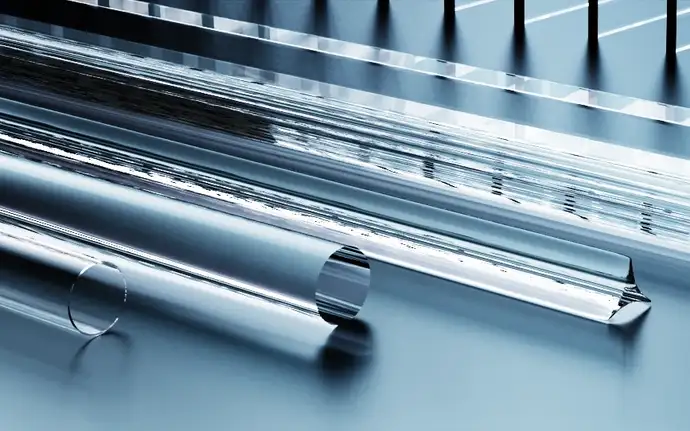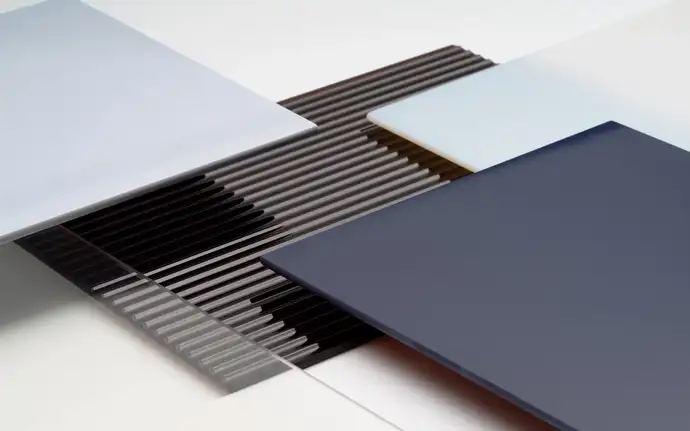Heat-resistant glass
Heat-resistant glass is designed to withstand high temperatures without breaking. The glass’s capability to withstand high temperatures is mainly due to a low coefficient of thermal expansion (CTE), in combination with a high glass-transition temperature. Therefore, heat-resistant glass is commonly used in applications where high temperatures, temperature changes, or thermal shocks are common – such as in cooking, laboratories, or industrial processes.
What is heat-resistant glass?
Heat-resistant glass is a widely used glass type that is able to retain its shape in temperatures up to approximately 932°F (500°C) without breaking. Heat-resistant glass-ceramic materials are capable of withstanding temperatures up to approximately 1,800°F (1,000°C).
How to make heat-resistant glass?
In regards to heat resistance, the glass’s capabilities are mainly derived from its ingredients. However, a thermal toughening process can also add thermal shock resistance and the ability to withstand very high temperatures to glass as well, making it ideal for fire-resistant and safety glazing. Because it provides enhanced strength and durability, thermal toughening is also commonly employed in architectural glass. The process involves uniformly heating the glass pane to a temperature slightly below 100 °C, surpassing its transformation point. Next, the surface is rapidly cooled, causing the glass's core to remain temporarily warmer than its surface. This differential cooling creates compressive stresses on the surface of the glass, significantly improving its resilience.
Heat-resistant glass also offers the advantages of high mechanical strength, strong chemical resistance, and high optical transmission – impressive for a material invented over a century ago.
Besides the aforementioned thermal toughening option that can make glass more heat-resistant, a different approach turns the material glass into glass-ceramics. This two-step method starts with glass melting and hot forming. This results in a raw glass with specific characteristics, tailor-made for the 2nd step: ceramization. Ceramization yields a material with exceptional features, including minimal expansion across a broad temperature range that can resist harsh environments and conditions – withstanding temperatures up to 950°C.
What are the advantages of heat-resistant glass?
Heat-resistant glass has many benefits for research, businesses, industry, and the home.
What type of glass is heat-resistant?
There are several different types of heat-resistant glass, each with their own unique properties and applications. These include:
1. Borosilicate glass: Borosilicate glass is a type of glass commonly used in laboratory equipment and other high temperature applications. Among other materials, it is made from a mixture of silica and boron trioxide, making it highly resistant to thermal shock. Ever since borosilicate glass was invented by Otto Schott in 1887, borosilicate glass has become one of the most widely-used high temperature materials in the world, to the point where can be found in almost every home, workplace, and building today.

2. Glass-ceramic: Glass-ceramic is a material based on specialty glass. It is heat resistant and combines the best characteristics from both glass and ceramic. Glass-ceramic is processed in two production steps: glass melting and ceramization of the raw glass. It offers a near-zero coefficient of thermal expansion (CTE) which makes it highly resistant to thermal shock. Glass-ceramic is commonly used in high-temperature applications such as fire protection or cooking (SCHOTT CERAN® glass-ceramic cooktops).
Learn more about glass-ceramic
Is tempered glass heat-resistant?
Tempered glass is a type of heat-resistant glass that is made by heating regular glass to a high temperature, then rapidly cooling it down. This process makes the glass stronger and more resistant to heat.
What is the highest heat-resistant glass?
One of the most widely-used and versatile forms of heat-resistant glass is borosilicate glass, invented by Otto Schott in 1887. This revolutionary glass is formed by adding a high percentage of boron oxide to silicon oxide during the glass melting process. The result is a highly-connected network of molecules that enable the material to not only be exceptionally resistant to thermal shock and temperature fluctuations, but boast excellent mechanical properties, high transmission, and a choice of processing methods as well.
Borosilicate glass, e.g., DURAN® glass tubing, starts softening at temperatures above 525°C, making it an ideal and stable choice at temperatures lower than 500°C.
Advanced glass-ceramic materials based on specialty glass substrates, such as NEXTREMA®, are superior in regards to heat resistance and temperature shock resistance. NEXTREMA®, for example, can withstand temperature shocks of up to 820°C and offers operating temperatures up to 950°C.









